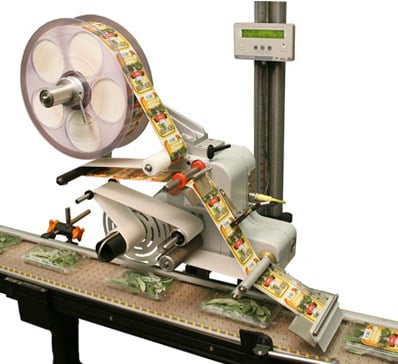Increase labeling efficiency and accuracy with an automated labeling system.
Label applicators and printer-applicators can save you money, time and headaches.
Mike Soloway, Labeling Systems Manager gives his top four reasons why you should consider automating your product labeling. Here is a transcript of his video:
Are you currently labeling your products by hand?
If so, I would like to invite you to take a couple of minutes to see how you may be able to benefit from automated labeling. If you’re thinking that you can’t afford automation, think about how much you currently pay for labor, mislabeled products and errors.
Perhaps automation is more affordable than you think. Although there are many reasons to consider automated labeling systems, here are my top 4:
Number 1 is labor savings. Labor is expensive, but with labeling automation, you can free up your employees to be productive in other ways. Labeling machines don’t require a salary, benefits, breaks or vacation days.
A quality system that is designed properly for your application can last for many years and help you grow your business and meet the demands of your customers.
Number 2 is consistent label placement. With manual label application, higher throughput results in more labor and less consistency in label placement.
Let’s face it, when an operator has to peel a label off a liner and then apply that label to a product, it’s not an exact science. The label will often be crooked or wrinkled, and the faster they have to move, the more inconsistent the labeling becomes.
Automation allows you to keep your label placement on target, even when through put increases.
Speaking of increased throughput, that’s number 3. As your operation grows, automated labeling systems will help you keep up with increased demand without having to hire as much additional labor.
And number 4, reduced errors. Verification options can make sure the right label was applied to the right product. Scanners and imagers can make sure that the barcodes and text are legible.
There are 2 main types of labeling automation, primary labeling and print apply labeling.
Primary labeling automates the process of applying fully pre-printed labels directly to products, virtually any size and shape. From food products like jelly jars, bakery clamshell containers or wine bottles, to health and beauty products like shampoos and lotions, to anything else that needs a label…Automotive parts, toys, electronics. Virtually anything needing a label can benefit from primary labeling automation.
Print apply adds variable printing to the label before it applies the label to the product. The most common use of print apply is labeling corrugated cartons with variably printed shipping labels. Other uses can include printing ingredients and nutritional facts on labels that are applied to food products. Printing warnings and uses on labels that are applied to chemical containers. Or even printing serial numbers on labels that are applied to anything from appliances to circuit boards.
If you’re ready to look into labeling automation, we’ve got a lot of helpful information, like brochures and videos posted on our web site www.weberpackaging.com.
If you’d like to take the next step and speak to one of our systems specialists, give us a call at 1-800-843-4242 or you can click on the contact page of our web site and submit a contact request.
Thanks for watching and be sure to contact us when you’re ready to take your company to the next level with labeling automation.

